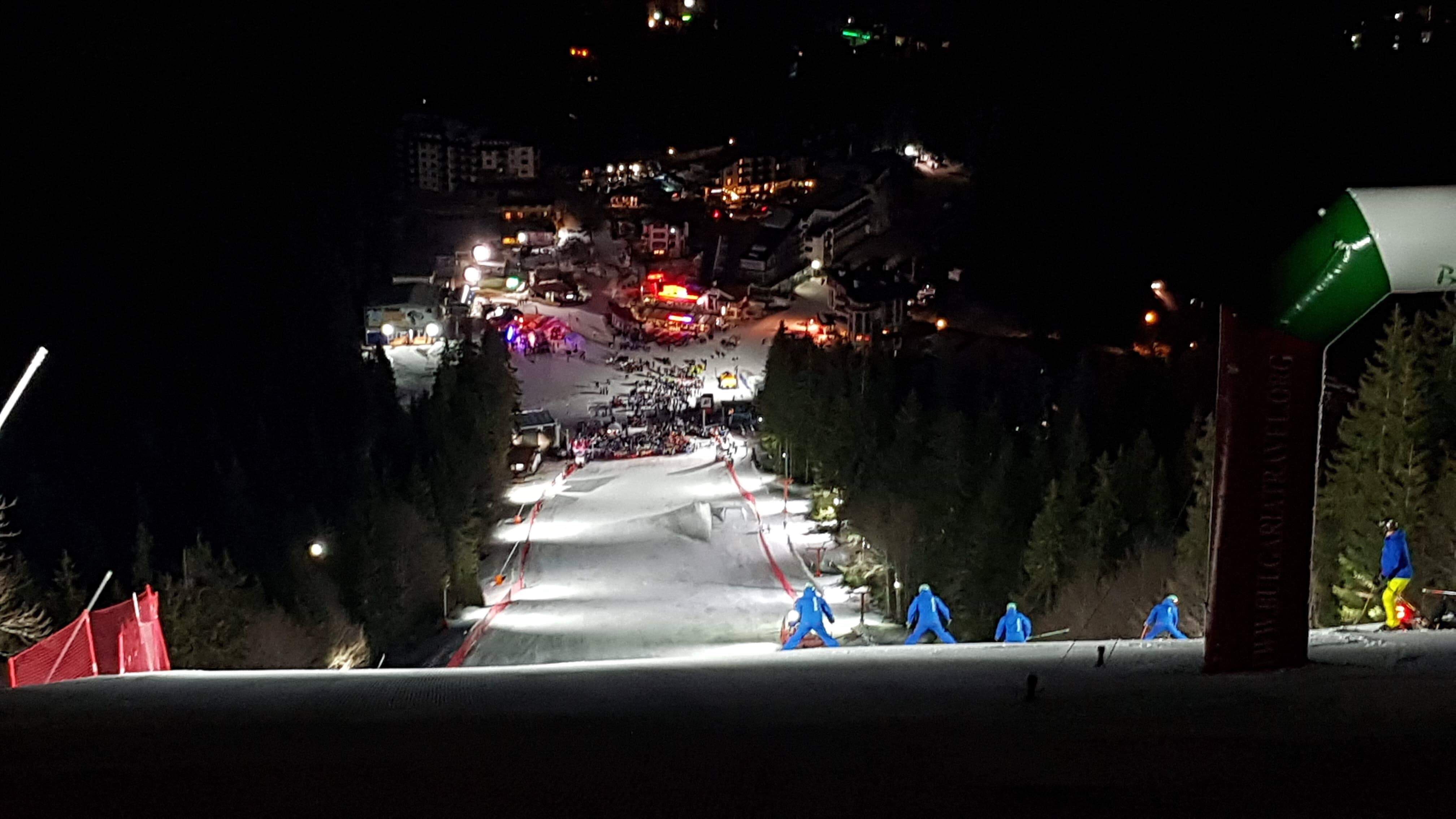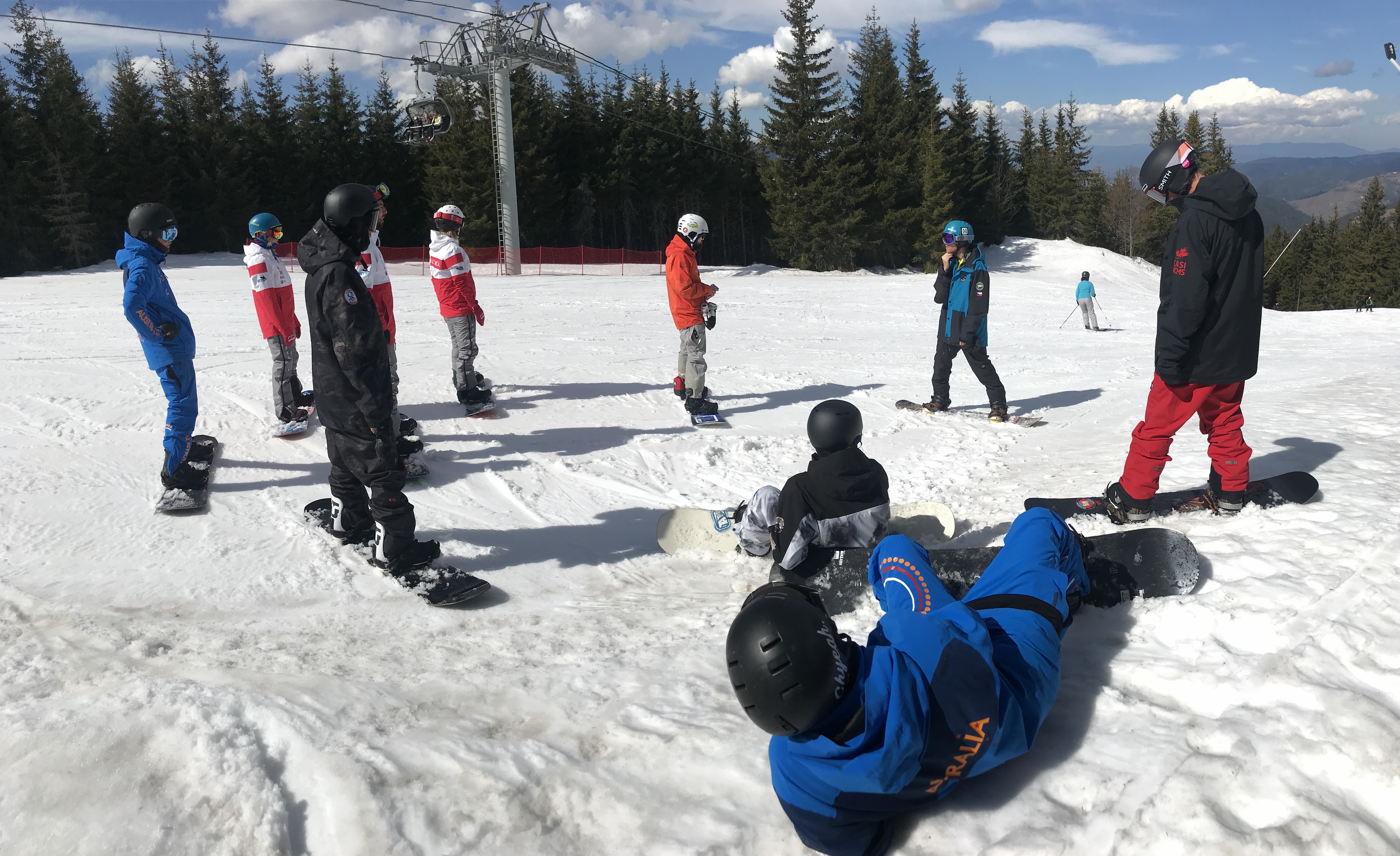Journée 3 du congrès Interski et aujourd’hui j’ai eu le plaisir d’assister à la session sur neige de l’équipe Suisse, un pays qui est toujours très branché et toujours en recherche d’innovation pour améliorer l’experience des étudiants des écoles de glisse de la Suisse, c’est bien aussi de jaser en Français avec eux, un de leurs languages officiel.
Le but de leur session étais de partager leur façon d’enseigner un mouvement ou une manoeuvre de façon simple et efficace; la manoeuvre du jour… Le Harry. Le Harry est facilement décrit come un nose press avec un backside shifty. Le but était de créer une position stable en nose press et en même temps envoyer le tail en contre rotation avec le haut du corps et une extension de la jambe avant pour produire un effet dramatique et un style sans égal! Assez difficile pour nous garder engagé!
La méthode d’enseignement fut simple… 1: On essais la manoeuvre après avoir vu une démo. Sur une piste verte damée, conséquences potentielle minimale. On en discute, on échange des impressions et on pose des questions…Similaire à la découverte guidée. 2: Quelle sorte de méthodes d’apprentissage sont les plus efficaces et quand les mettre en pratique? On déconstruit la manoeuvre en étape. Sur une surface plate on commence avec un nose press, on explore l’amplitude des movements avant, la position des hanches et les sensations recherchées. On se met par deux et on va encore plus loin dans notre amplitude et on ajoute le shifty, mon partenaire me tenant les deux mains pour stabilité lorsque nous somme statique; pas facile! Nous sommes en Acquisition des mouvements.
3: On glisse! Maintenant c’est le temps de mettre les mouvements acquis en pratique, toujours sur du terrain vert ou les conséquences sont basse pour assurer une performance optimale. On nous donne beaucoup de temps pour la Consolidation des mouvements de la manoeuvre. 4: Application et Variation des mouvements (manoeuvre): Comment individualiser l’enseignement pour pouvoir adresser tout les types d’apprentissage? On trouve des analogies pour contribuer davantage à la simplicitée de l’enseignement et assurer la comprehension… dans ce cas ci: Bowling! On peu aussi comparer à une autre manoeuvre commune: Frontside Boardslide, Nollie, speed checks, etc. On se met en partenaire pour l’équivalent du bon vieux Top Gun, on varie en utilisant du terrain varié (les bords de piste, on essaie en switch) et en augmentant la difficulté et le défi. Tout ça soutenue par une analyse individuelle de la performance.
5: Création et Supplément des mouvement: Que puis-je faire comme enseignant pour aider les étudiants à atteindre leur but(s)? Dans ce cas ci on nous emmène dans le parc pour utiliser les modules; des Harry sur les jointures des sauts et gérer les pressions associées aux changements de terrain, vraiment le fun et un bon défi pour tous.
Donc un modèle d’enseignement simple, individuel et efficace pour une progression plus rapide et une expérience durable avec une progression similaire au modèle Canadien du développement des habilitée motrice (IARCV). Bravo les Suisses; très bonne présentation.
Merci!
Luc Bélanger





